A Constructor’s Guide To Bonds and Stretchers
At times, you may have heard about bonds and stretchers and wondered about their roles in construction. Well, your questions have found their answer!
By the end of this knowledge-packed piece, you will gain a comprehensive understanding of the ‘stretcher’ in construction, different bond patterns, their practical applications, and even how to choose the best fit for your construction project.
Shall we say, ‘No brick will be left unturned’?
So, let’s explore the world of stretchers and bonds without further ado!
Table of Contents
Understanding a Stretcher in Construction
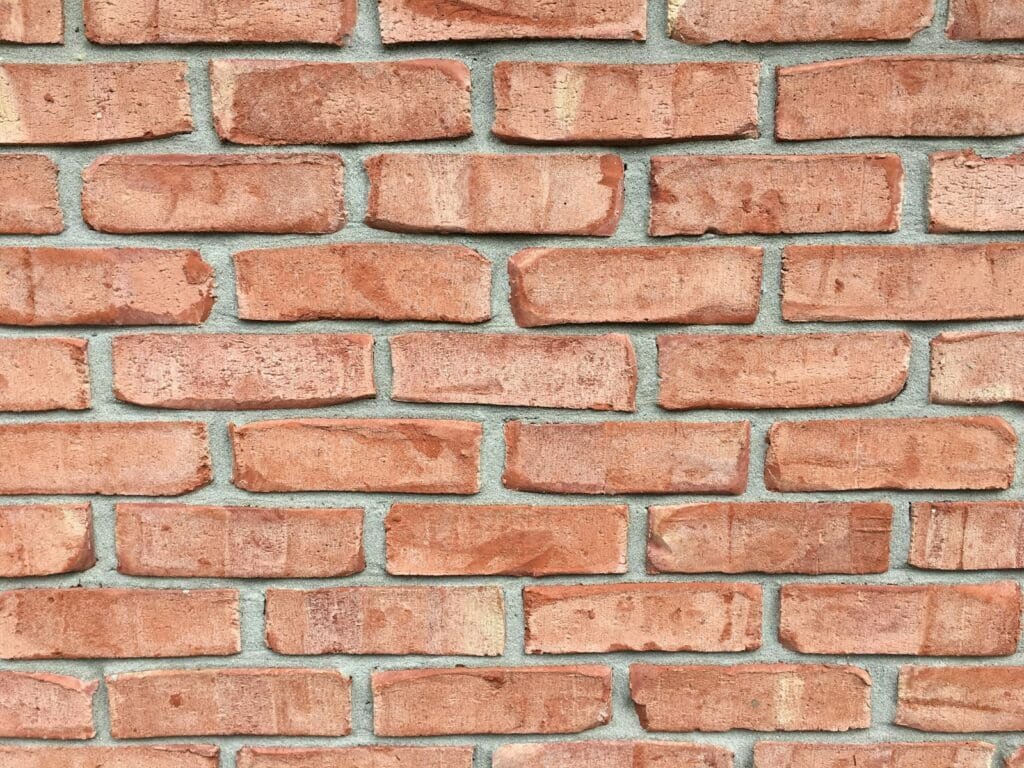
Definition of a Stretcher
A stretcher in construction refers to a brick or block that is laid with its longest side parallel to the face of the wall. This method is common in brickwork and masonry.
Why Use Stretchers?
- Provides stability to the wall structure.
- Offers a uniform and aesthetically pleasing look.
- Helps align and interlock other bricks or blocks effectively.
Common Patterns Involving Stretchers
| Pattern | Description |
|---|---|
| Running Bond | This pattern uses stretchers in each row, staggered by half a brick in adjoining rows, creating a “stretched” visual effect. |
| English Bond | Alternates between rows of stretchers (long side) and headers (short side), offering robust structural integrity. |
| Flemish Bond | Features alternating stretchers and headers in each row, contributing to an interlocking yet ornamental design. |
Practical Applications of Stretchers
Stretchers are essential in providing:
- Structural Support: By interlocking bricks, they enhance the overall strength of the wall.
- Load Distribution: They help in distributing the load evenly across the wall.
- Design Flexibility: Used in various bond patterns, stretchers can cater to both structural and aesthetic needs.
For more details on traditional masonry techniques, you can refer to Encyclopedia Britannica.
Exploring More Types of Pattern Bonds
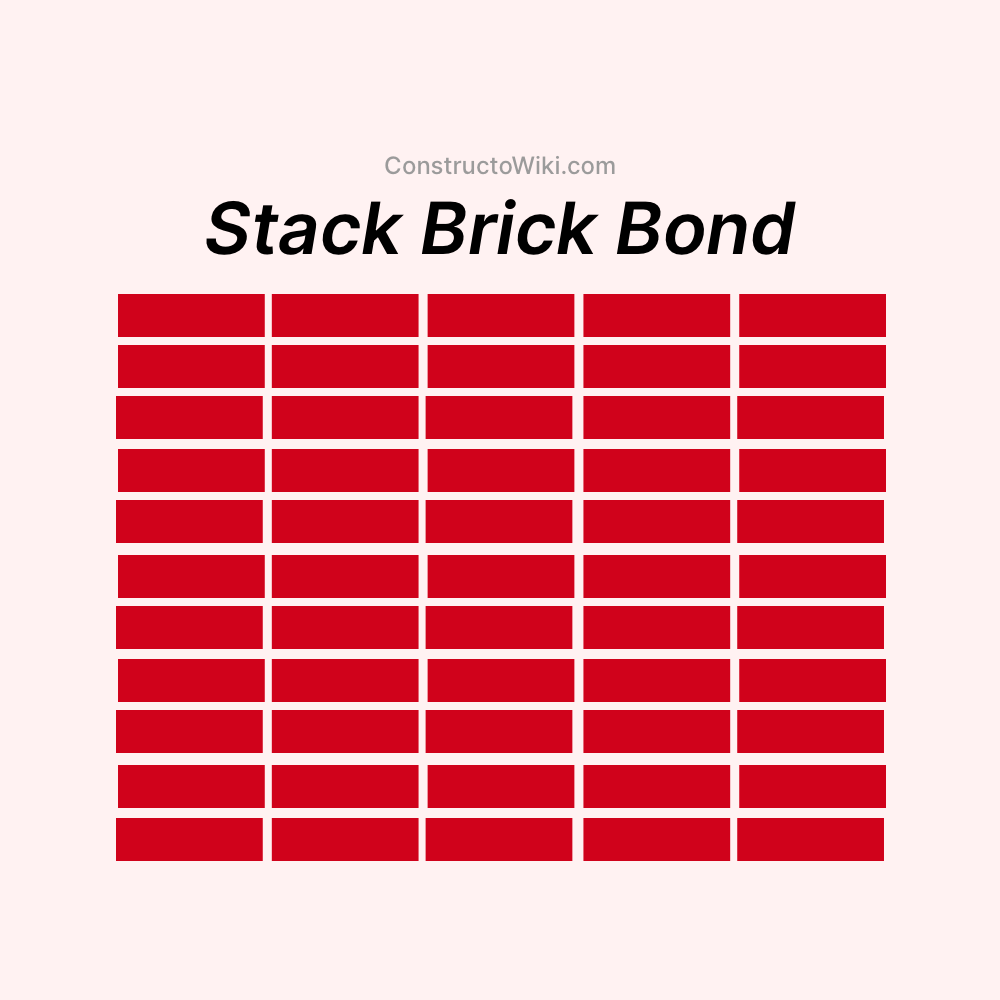
Stack Bond
Another pattern to consider is the Stack Bond. Unlike the three variants mentioned previously, a Stack Bond purely focuses on the brick’s visual appeal rather than structural solidity. It is characterized by a clean, linear look and straightforward assembly process.
The bricks are laid directly above and below each other, creating vertical and horizontal lines that are perfectly aligned. This pattern ideally suits walls that do not have significant load-bearing responsibilities, like ornamental garden walls or interior feature walls.
Monk Bond
Taking a cue from the Flemish Bond, Monk Bond also alternates between headers and stretchers; however, its configuration differs. Usually, for every header placed, there are two to three stretchers in the same row. This makes it visually distinct and adds another layer of interlocking efficiency, thereby enhancing the wall’s durability.
Herringbone Bond
Interestingly, the Herringbone Bond deviates from the convention of horizontal brick arrangement. Instead, it arranges bricks in a pattern that resembles herring fish bones or ‘V’ shapes. Its angular placement can enhance the visual impact of flooring, pavements, and pathways.
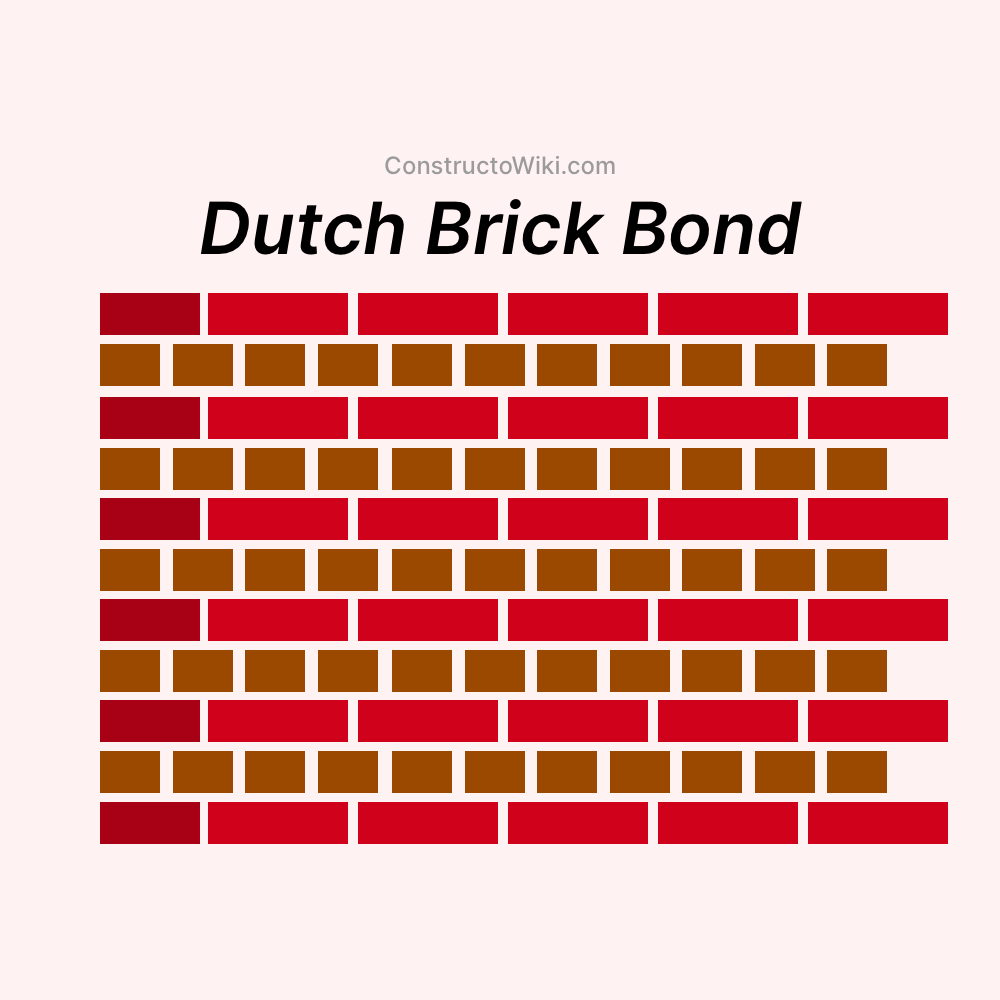
Dutch Bond
Like English Bond, Dutch Bond alternates stretcher and header rows, with one key difference. Every alternate stretcher row begins and ends with a header. This pattern, popular in the Netherlands, gives off a unique look, with equal emphasis on aesthetics and stability.
Zigzag Bond
The Zigzag Bond is versatile and eye-catching, often applied to small areas or decorative elements. Bricks are laid diagonally to form a zigzag pattern. This bond type is used in pathways and patios where both structural stability and visual interest are desired.
Basket Weave Bond
This bond pattern mimics the look of a woven basket by placing bricks in pairs, with two bricks laid horizontally followed by two bricks laid vertically. The Basket Weave Bond is commonly used in pavements and wall veneers to add textural interest and is ideal for small surfaces.
Choosing the Right Bond Pattern
Understanding different bond patterns is vital, but equally important is selecting the right one for your construction project. Each pattern carries unique structural attributes and aesthetic qualities that make it suitable for specific applications. Here are a few guidelines to consider:
- Load Bearing: Bonds like English and Monk provide excellent structural support, suitable for walls bearing significant weight.
- Aesthetics: For design-oriented projects, patterns like Stack or Herringbone provide a unique visual experience.
- Efficiency: Patterns like Running Bond require less cutting of bricks, thus saving time and resources.
Exploring Common Brick Bond Patterns in Construction
What is the Difference Between Stretcher Bond and English Bond?
In construction, brick bond patterns play a critical role in defining both the aesthetic appeal and structural strength of a wall. Two commonly used bond patterns are the Stretcher Bond and the English Bond. Understanding the differences between these two can help in selecting the right pattern for a given project.
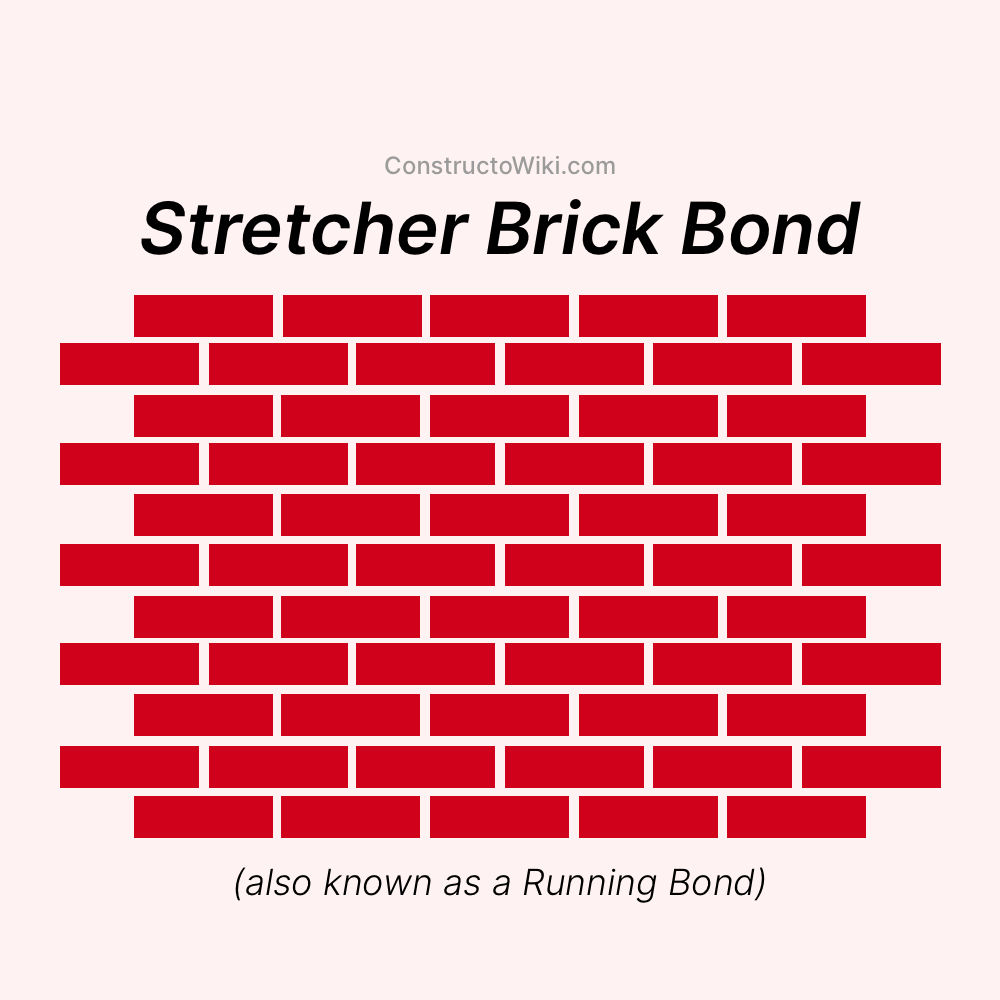
Stretcher Bond
The Stretcher Bond, also known as the Running Bond, is one of the simplest and most frequently used brick patterns. Here, each brick is laid as a stretcher with its longest side parallel to the face of the wall.
- Appearance: It creates a linear, continuous look that is visually clean and straightforward.
- Structural Attributes: The Stretcher Bond is not inherently strong for load-bearing walls but is excellent for partition and veneer walls due to its simplicity and ease of construction.
- Ease of Construction: It requires minimal cutting of bricks and less skilled labor, making it both time-efficient and cost-effective.

English Bond
In contrast, the English Bond alternates courses of stretchers and headers, providing a pattern that is not only visually varied but also structurally robust.
- Appearance: It offers a balanced look, with alternating rows that add visual interest to the wall.
- Structural Attributes: The English Bond is highly suitable for load-bearing walls due to its alternating pattern that enhances wall strength and stability.
- Complexity: Construction of an English Bond requires more skill and precision to ensure correct alignment, meaning it can be more labor-intensive and time-consuming.
Concluding Thoughts
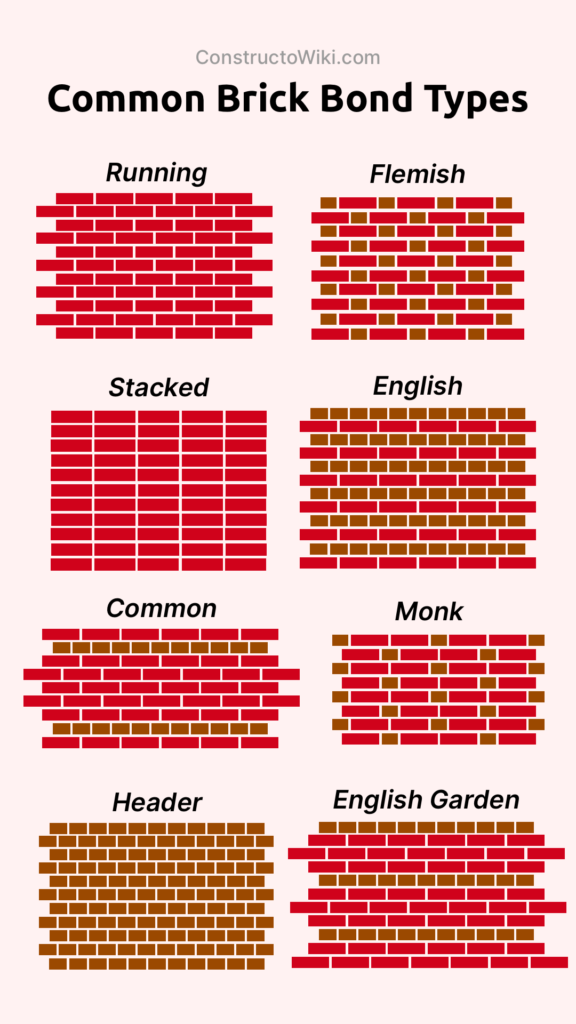
Understanding the concept of a stretcher in construction offers a deeper insight into the precision and aesthetic appeal inherent in brickwork.
This construction method commends stability, alignment, and attractive uniformity to any structure. A wide variety of bond patterns, including Running Bond, English Bond, and Flemish Bond, exploit the benefits of stretchers. These patterns enable structural support, load distribution and allow for design versatility.
Further bonds like Stack Bond, Monk Bond, and Dutch Bond, provide additional design flexibility and structural capabilities.
By selecting the right pattern based on structural needs and aesthetic preferences, one can create a structure that’s not only sturdy but also visually engaging. The distinctions in brick bond patterns offer a fascinating glimpse into the science of construction, unifying artistic design with functional need.
Frequently Asked Questions – FAQs
What is a stretcher in masonry?
A stretcher is a brick or block in a construction laid with its longest side parallel to the face of the wall, providing stability, uniformity, and effective interlocking of the bricks.
What are some common patterns using stretchers?
Stretchers are used in several patterns like Running Bond, English Bond, Flemish Bond, and others. These patterns vary in aesthetics and structural capacities, allowing for design and practical flexibility.
What factors should I consider while choosing a bond pattern?
When choosing a bond pattern, consider the structural attributes, aesthetic appeal, the efficiency of construction, and ease of future repairs. The right balance of these factors would determine the most suitable bond pattern for your project.






